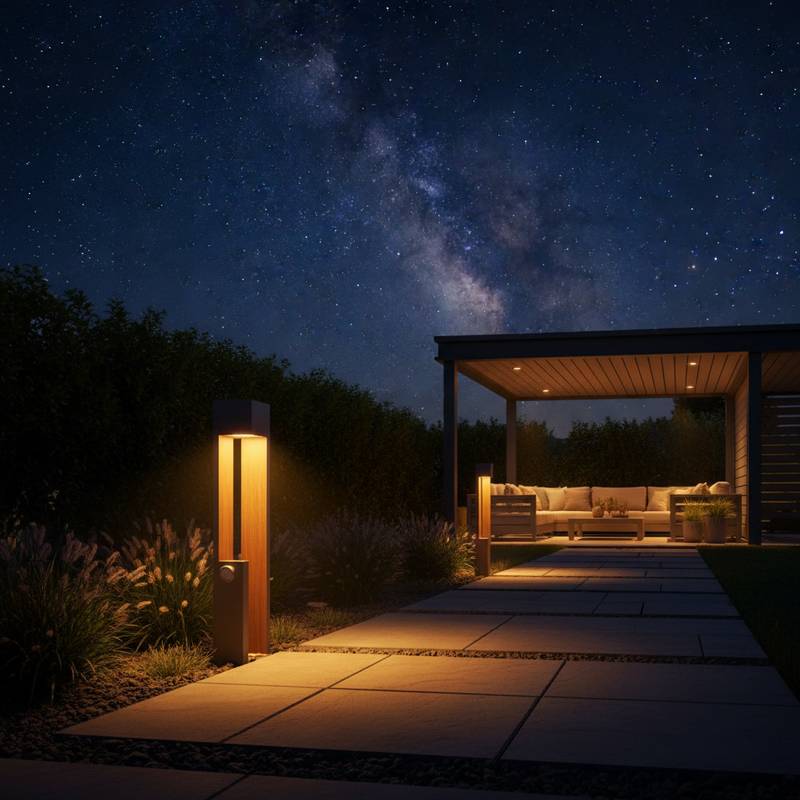Designing a Moonlit Garden Paradise
Imagine wandering through your garden after sunset, where subtle glows emerge from foliage and blooms under the moon's gentle light. Daytime vibrancy often recedes into darkness, but a thoughtfully planned moon garden revives the space with ethereal illumination. This design approach proves accessible and fulfilling, fostering an environment rich in soft radiance, aroma, and serene motion.
Viewing Your Garden Through Nighttime Eyes
Moon gardens prioritize evening appreciation over daytime spectacle. They emphasize the subtle gleam of white and silver elements, nocturnal blossoms, and gentle light play. Moonlight enhances these features, producing a soothing ambiance that encourages extended stays.
Conduct a nighttime assessment of your yard before planting. Observe natural moonlight patterns across various areas. Identify persistently shadowed spots and those bathed in faint illumination. Such evaluation reveals your landscape's nocturnal dynamics, informing decisions that leverage contrast for reflective depth.
Mapping Out Your Evening Retreat
Approach your moon garden as a sanctuary of subtlety rather than bold hues. Select plants in white, soft yellow, and silver-gray tones that amplify available light and introduce dimension in low visibility.
Establish a central element, such as a bench, fountain, or upright plant grouping, to anchor the design. Arrange vegetation in graduated layers, positioning taller specimens at the rear and finer, low-growing options upfront for intimate viewing. Incorporate meandering paths or stone steps to facilitate exploration and varied perspectives.
Target a single area for this transformation rather than overhauling the entire yard. A modest section suffices to redefine evening outdoor use, evolving into a dedicated zone for quiet contemplation.
Selecting Plants for Nocturnal Brilliance
Plant choices define the vitality of your moon garden. Integrate pale blossoms, aromatic varieties, and reflective leaves to achieve a cohesive nighttime allure. The following categories provide targeted recommendations to assemble your luminous haven.
White and Pale-Colored Flowers
White blooms serve as the cornerstone, capturing scant light to produce a haunting luminescence.
- Moonflower (Ipomoea alba): This climbing vine displays expansive white petals that expand at dusk, accompanied by a mild fragrance ideal for draping over arbors or walls.
- Evening Primrose (Oenothera biennis): Pale yellow flowers emerge as twilight descends, emitting a delicate sweetness that summons evening pollinators such as moths.
- White Nicotiana: Known as flowering tobacco, it disperses a subtle evening perfume, enhancing the garden's sensory appeal.
- Shasta Daisy (Leucanthemum x superbum): Sturdy white petals maintain visibility in dim conditions, providing seasonal framework and reliability.
Silver and Light-Reflecting Leaves
Foliage contributes significantly to the garden's enduring character. Silver and variegated options capture moonlight, sustaining interest beyond flowering periods.
- Lamb's Ear (Stachys byzantina): Its fuzzy, silver leaves offer tactile softness and luminous highlights.
- Dusty Miller (Jacobaea maritima): Gray-silver foliage contrasts sharply in twilight, ideal for edging or accents.
- Artemisia: Feathery, aromatic leaves impart a hazy glow along borders and trails.
Aromatic Evening Openers
Scent elevates the moon garden beyond visuals, immersing visitors in layered sensory delight.
- Night-Blooming Jasmine (Cestrum nocturnum): Fragrance peaks after sunset, infusing the air with intense sweetness.
- Garden Phlox (Phlox paniculata): White cultivars yield a soothing aroma that blends seamlessly with cooler night breezes.
- Honeysuckle: Vines along supports release enduring, evocative scents that persist into the late hours.
Harmonizing Illumination and Contrast
Natural moonlight provides the primary canvas, yet strategic additions amplify its impact. Install solar-powered path markers, low lanterns, or protected candles to accentuate key plants without dominating the scene. Prioritize restraint to support rather than overshadow lunar effects.
Account for shadow dynamics in your layout. Slender-leafed tall plants generate intricate ground patterns, while compact shrubs form dark pools that intensify adjacent highlights. This interplay of brightness and obscurity infuses the space with intrigue and volume.
Welcoming Nocturnal Visitors
Evening hours introduce unique ecological activity. Moths, bats, and night-flying birds seek nectar and prey in such settings, injecting subtle animation.
Moonflowers and evening primroses draw hovering moths to their blooms. Ambient sounds like cricket calls or avian twitters enhance tranquility. A modest water element may attract frogs or insects, their gentle activities underscoring the garden's role as a vibrant nocturnal habitat.
Practical Steps to Launch Your Project
Embark on this endeavor incrementally to build confidence.
- Select the site. Choose an area with partial moonlight exposure or potential for supplementary soft lighting.
- Experiment via pots. Trial white or silver plants in containers, repositioning them nocturnally to optimize glow.
- Incorporate varied textures. Pair broad leaves with delicate ones for nuanced visual interest.
- Position scents thoughtfully. Site aromatic plants adjacent to paths or seats for immersive encounters.
- Monitor and refine. Dedicate evenings to observation, adjusting elements to achieve equilibrium between light and dark.
These initial actions generate progress. As your garden matures, it reveals fresh opportunities for nighttime enjoyment.
Nurturing Your Evening Oasis
Maintenance of a moon garden evolves into a calming routine. Irrigate during morning hours to allow foliage drying before dusk. Monitor soil dampness, favoring well-draining conditions for pale plants. Remove faded flowers to promote continuous blooming, and clear walkways for unobstructed evening access.
Seasonal shifts influence the garden's character. Clear nights emphasize reflective qualities, while overcast ones soften contours. Frequent visits, prompted by jasmine aromas or petal gleams, highlight beauty's persistence beyond daylight.
Embracing the Nighttime Sanctuary
A moon garden transcends mere aesthetics, reshaping evening routines toward repose, dialogue, and introspection. Cultivation attunes you to nature's persistent cycles post-sunset.
In these spaces, pause to absorb the leaf sheen, drifting scents, and ambient life pulses. Such immersion rewards the investment in design and upkeep with profound, enduring serenity.



